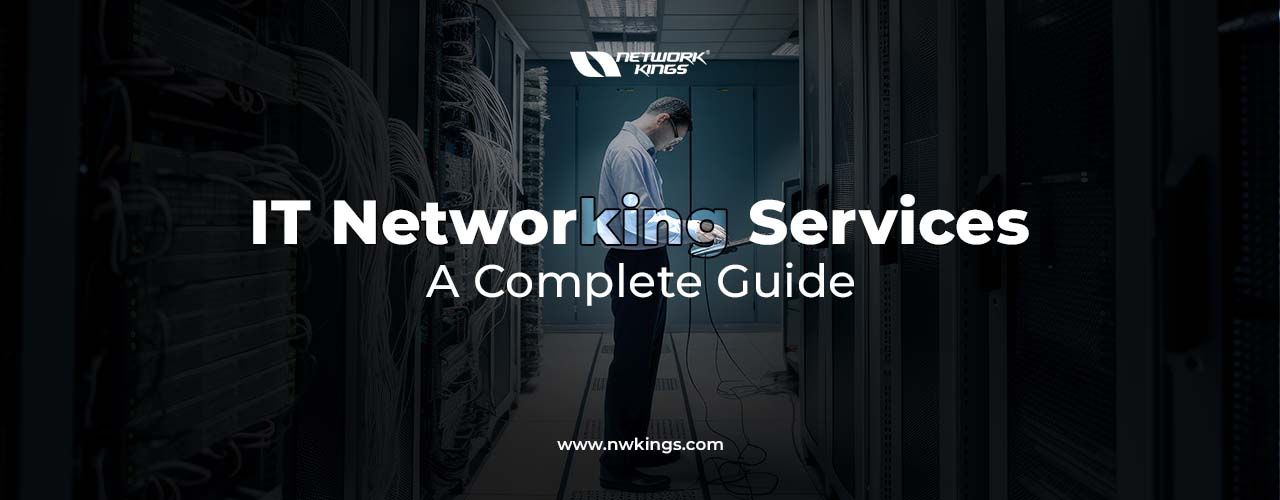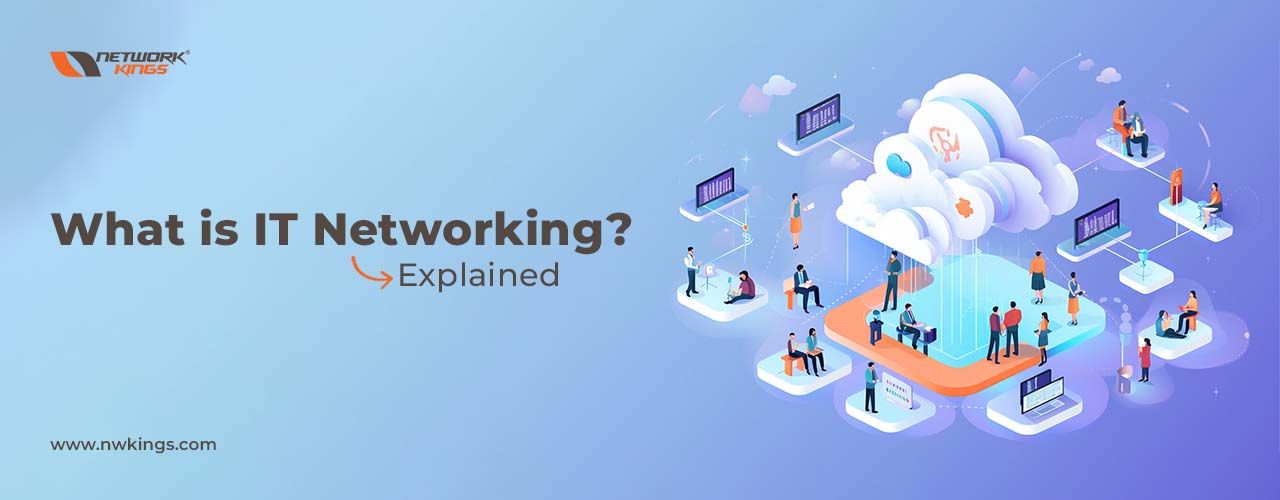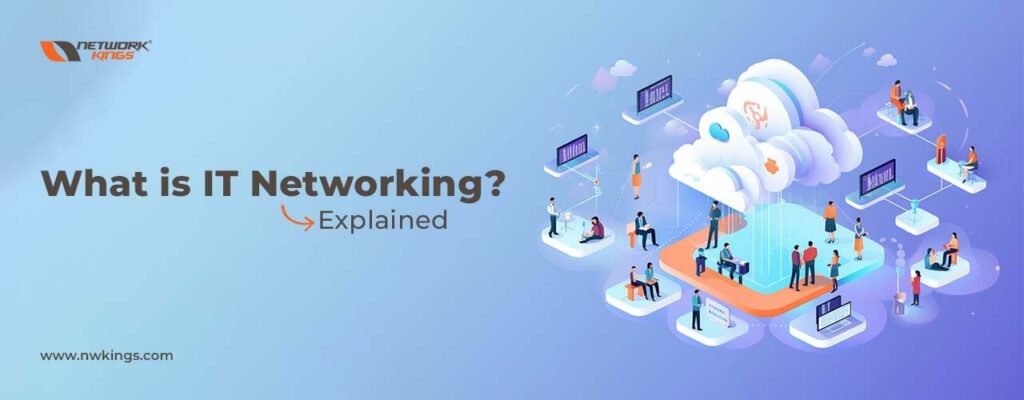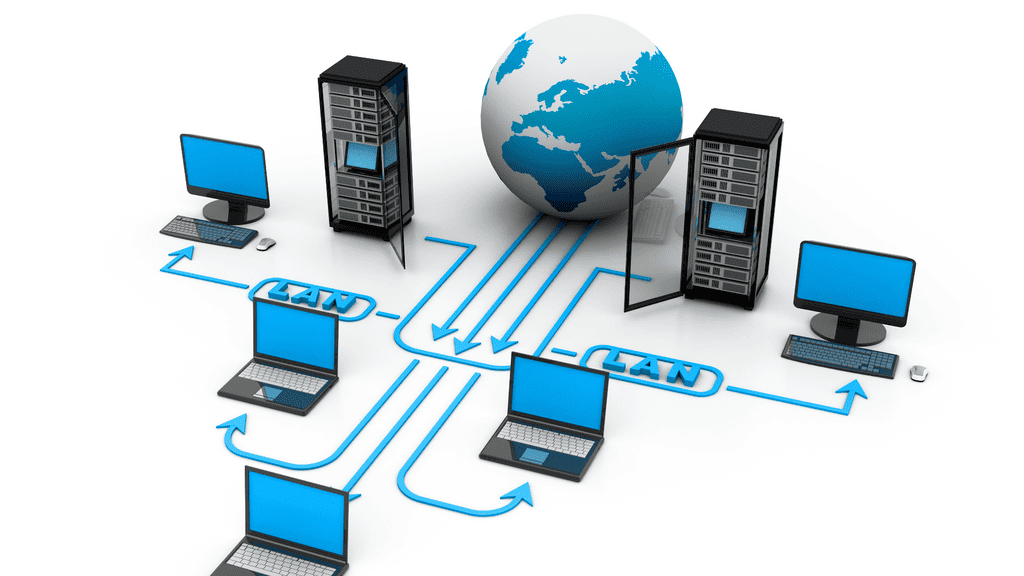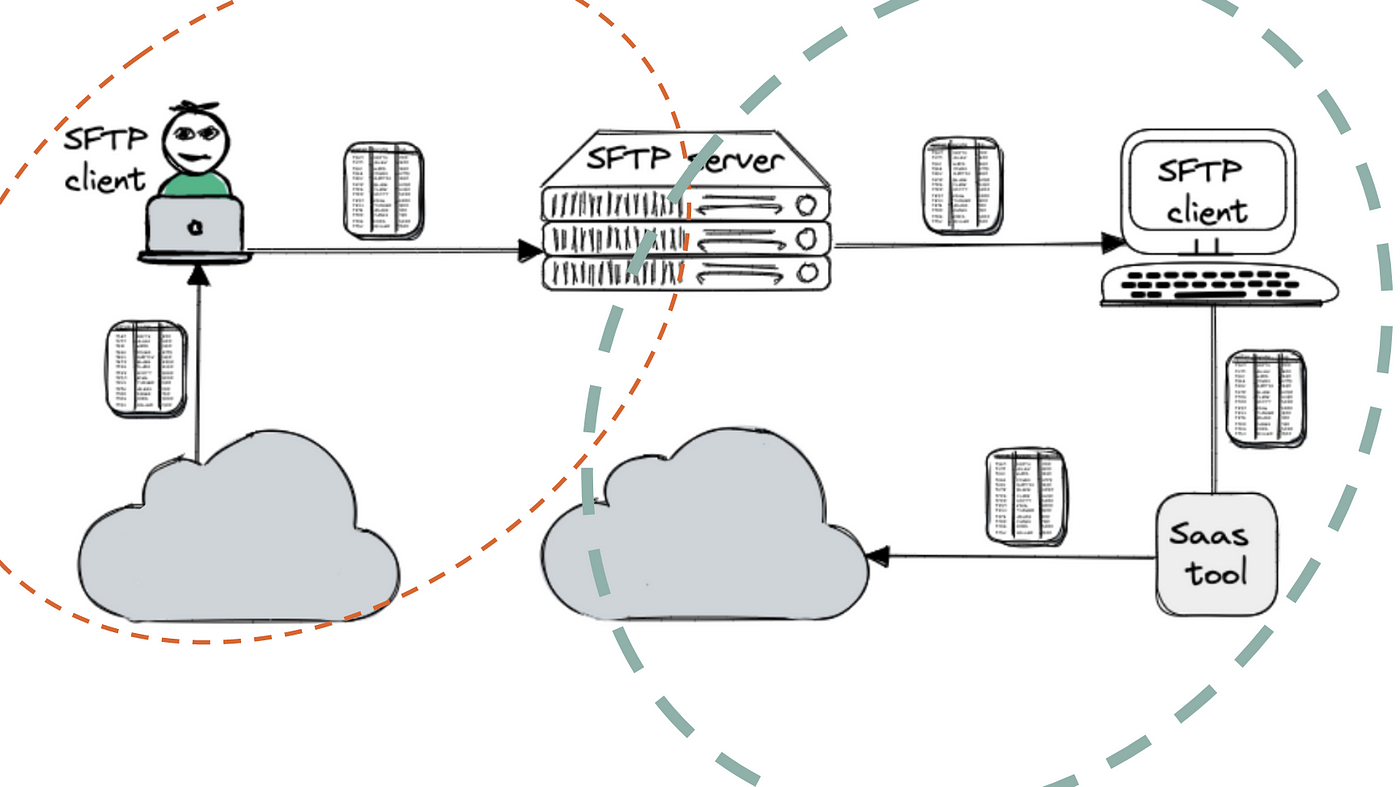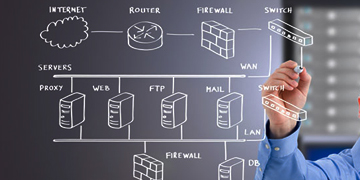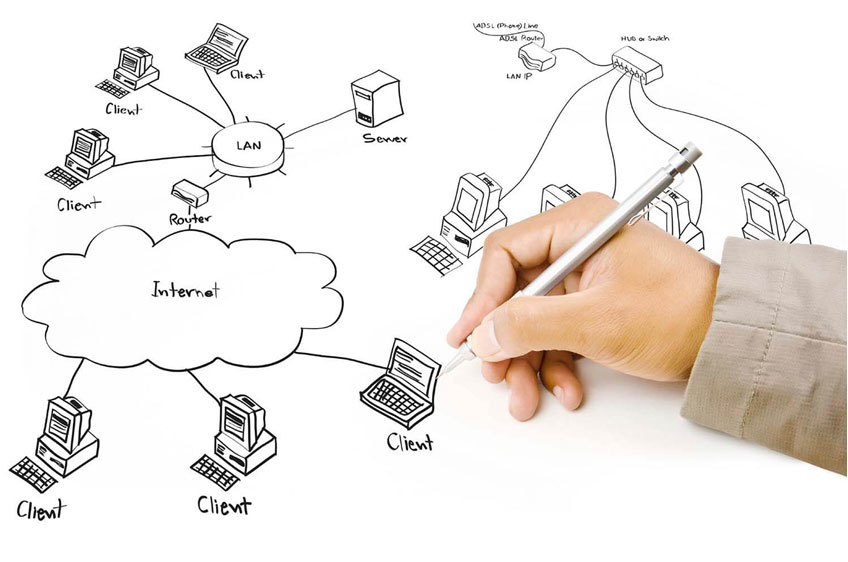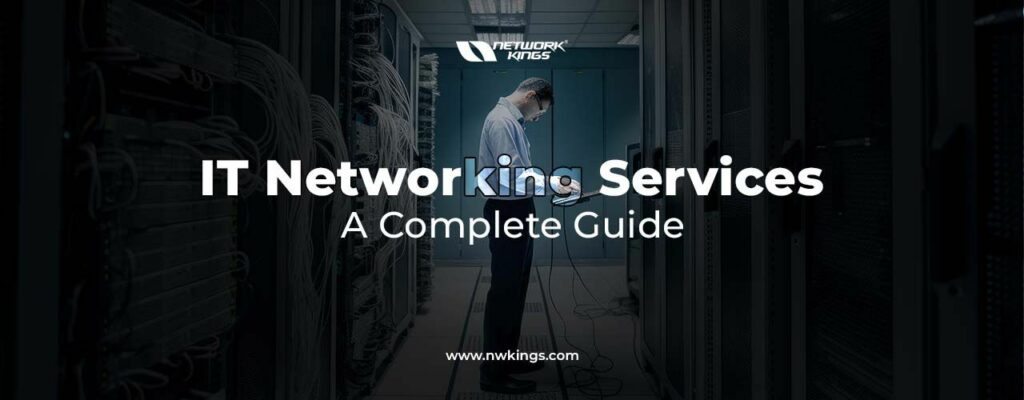
Let’s discuss the top-notch IT networking services in detail. In this space, you will find all the information about Network Solutions, IT Infrastructure, System Maintenance, Cloud Services and Data Security that’s up-to-date with today’s ever-changing tech landscape. What’s more, is that we also provide tips for staying secure yet compliant while using any sort of digital service or product.
Whatever queries or further questions you have – don’t hesitate to drop us a line as our team of experts is only too happy (and well-equipped!) to assist in getting your business running smoothly without any hiccups along the way!
Understanding the Basics of IT Networking Services
.jpg)
When it comes to IT networking services, the basics are essential. Even if you’re not an expert in this field, it’s easy enough to comprehend why understanding these fundamentals can be beneficial. So what is a network service? Speaking, a network service is just like any computing system that provides users with access and sharing of data between more than one computer or device – for instance, internet connections shared among several people or devices; cloud storage; applications shared across networks as well as wireless internet connection and so on. All these things come under one umbrella which we call Networking Service!
If you’re running a business, these services make it easy for customers and colleagues who might not be in the same place to collaborate efficiently. Networking solutions can also help businesses economise by bringing together some of their IT resources under one roof. Plus, if implemented correctly they can even lower energy costs that come with powering and cooling single computers. All this makes sense – no wonder more companies are turning towards network options!
Figuring out the hardware components you need for your network setup is a vital opening move. Depending on what set-up you have, it can mean different bits of machinery like routers, hubs, switches, firewalls or dedicated printers (we call those ‘print servers’). On top of that, there’ll be PCs which are wired in or wirelessly connected and any other digital devices such as phones/tablets so they can make use of the system correctly. Now then – after working out your tech needs – comes configuring all the software stuff with setting up your network properly!
Setting up a network properly requires setting up authentication protocols for users, such as passwords and usernames, so only authorised personnel can access the system. You also need to define permissions for file sharing – like read-only or full control – along with configuring antivirus software and other security measures to make sure your data is secure.
An experienced IT professional makes this process much less bewildering! Once everything is set up however you haven’t finished yet: regular maintenance checks are vital in keeping your network operating securely at all times. Make note of any changes made over time including new user accounts created or alterations in file sharing settings; that way you can be certain it continues running harmoniously going forward.
The Role of Network Solutions in Modern Business
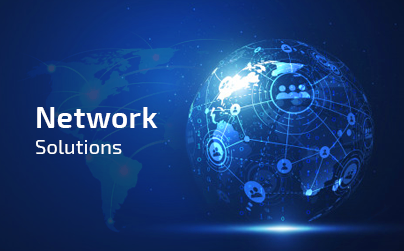
As businesses strive to modernise their operations, they oftentimes resort to Network Solutions to ensure that the connection with customers and clients is maintained. Network Solutions offers a range of IT networking services and products which can help any business stay ahead of its competitors. Whether it be setting up high-speed internet access or providing secure data storage; network solutions make sure organisations can keep abreast with technology ameliorations as time passes by – an indispensable requirement for staying atop nowadays’ tech landscape!
Network Solutions also offers a comprehensive set of services designed to suit the requirements of any organisation, ranging from basic communication networks for small businesses right up to hugely complex enterprise-level systems for bigger organisations. These solutions allow companies to quickly roll out new applications or increase their bandwidth without needing to purchase extra hardware or software. They can help diminish downtime too by utilising cloud hosting solutions that make it easy enough for firms to alter according to their needs change over time – what else could you ask?
Moreover, Network Solutions provides support and maintenance packages specifically designed to benefit companies within their IT departments. From offering technical assistance remotely or diagnosing software/hardware issues on site – these services are an invaluable asset for maintaining systems at peak performance levels. Additionally, organisations profit from 24/7 monitoring tools which can detect any potential problems before customers even notice impaired service availability; this helps bolster customer satisfaction as well as reduce the risk of expensive downtime due to system failures.
Generally speaking, network solutions fulfil a critical role in aiding businesses to remain connected and productive in the digital age we live in today. By implanting such solutions into their processes companies become better equipped for further growth while making sure that they provide reliable and secure connections with regards to both customers and stakeholders alike. In essence then -network solutions make it easy no matter what size your business is; permitting them to maximise productivity while simultaneously cutting down costs!
Components of Effective IT Infrastructure

IT networking services are a must-have for any thriving business. The constituents that make up a competent IT infrastructure involve hardware, software, network configuration and data storage. By grasping each component companies will be able to set up an infrastructure which is dependable, secure and cost-efficient.
Hardware involves the physical environment where components are situated such as routers, switches and other devices – they should be chosen cautiously according to the company’s necessities plus how much traffic they’ll have to manage; what kind of investment would you consider necessary here?
Choosing the right hardware components for an IT infrastructure is essential. Not only should you think about things like power consumption and heat dissipation, but also if it meets your requirements in terms of performance. Software too is a major part – operating systems, security applications and custom programs designed to do certain jobs all have to be up-to-scratch so that they can remain easy to maintain and provide the necessary performance levels when needed.
A good idea as well would be selecting software which has solid support from vendors; this helps reduce downtime during updates or resolve any issues quickly if anything does go wrong.
Network settings relate to how physical components are linked together within the infrastructure, allowing communication between devices inside and outside networks like the Internet or other private systems. Such configurations encompass subnet masks, IP addresses, and DHCP setups which determine how devices interact with each other across distinct networks.
Data storage is a critical part of any effective IT system and stands for what device/medium holds data in an organisation’s environment – be it hard drives connected via USBs or internal RAID schemes etcetera. When selecting data storage solutions you need to consider factors such as performance requirements, scalability and security features so that your needs can keep up over time while preserving information integrity without being compromised.
Importance of Regular System Maintenance
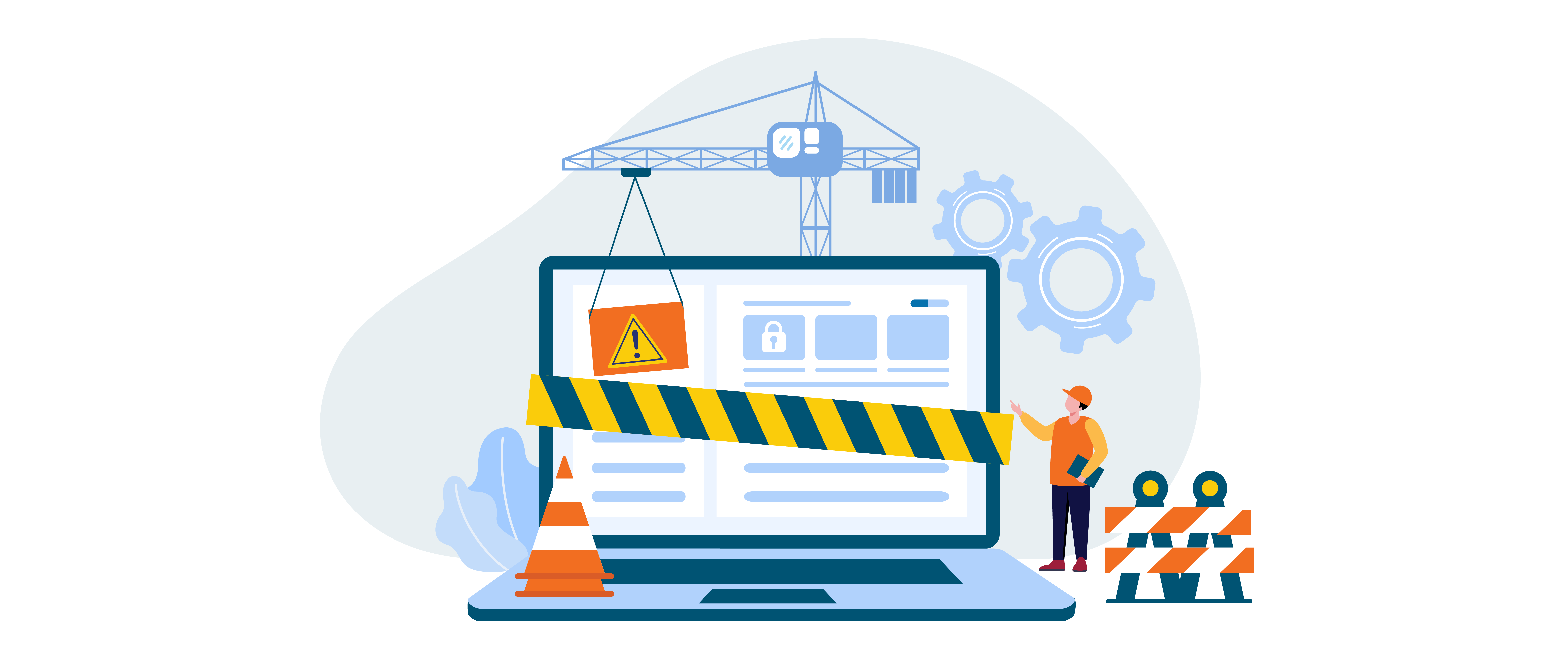
When it comes to IT networking services, regular system maintenance is of utmost importance. Technology keeps progressing at a rapid pace and organisations must make sure their networks are up-to-date for them to run smoothly as well as detect any security risks before they become hazardous. Early detection of these threats may help prevent data breaches or worse, cyber attacks from taking place – protecting businesses from serious damages both financially and reputation-wise. So the next question then becomes: why exactly is system maintenance so important?
Keeping your software and hardware components regularly updated can make a huge difference in network performance which directly impacts the productivity of both staff as well as customer service. Something else that you should be mindful of is changing passwords regularly – it’s an effective way to keep potential hackers away from any company’s confidential information, so don’t underestimate its significance!
Taking these proactive steps will not only help protect sensitive data from being accessed by unwanted parties but also decrease the chances of malicious activity happening inside your systems. So if you want to stay one step ahead when it comes to security threats, why not think about bringing in some IT expertise?
Proper system maintenance is pivotal if you want to safeguard your business from possible threats and guarantee the networks remain secure all of the time. Qualified IT experts understand exactly how systems work, so they can provide helpful guidance when it comes to keeping up with maintenance best practices which will help protect your business from any potential issues.
In addition to this, they can spot weaknesses in your network infrastructure and come up with speedy solutions for them. Furthermore, these professionals may be capable of suggesting extra precautions like firewalls or antivirus software that’ll add an added layer of security against malicious activity. Addressing questions such as why invest time into regular system upkeep? Why hire a professional for assessments? And what additional measures do I need? Will give you peace of mind knowing everything’s guarded properly in our digital world today!
Exploring Different Types of Cloud Services
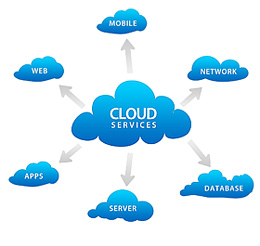
Are you looking to expand your IT or increase business efficiency? Cloud services are an excellent option as cloud computing technology keeps evolving and more businesses use it for cost-effective access to applications. There is plenty of variety when checking out different sorts of cloud services available – the most popular being Infrastructure-as-a-Service (IaaS). With IaaS, organisations can rent networks, data centres and other infrastructure components on a subscription basis.
This gives businesses the flexibility and scalability they need, as well as saving a good amount of money on hardware and maintenance costs. Thanks to IaaS, companies can set up new servers in minutes – without having to buy any hardware upfront.
The next popular cloud service is Platform-as-a-Service (PaaS). This model provides access to components such as databases, operating systems web servers and networking services all bundled together: much easier for developers when deploying web apps since there’s no worrying about managing physical hardware anymore.
Software-as-a-Service (SaaS) is another great option to consider for cloud computing. This way, users have access to applications such as CRM solutions and enterprise resource planning (ERP). Taking advantage of SaaS means organisations don’t need to purchase or keep their software – all the services are provided through a subscription on the provider’s site. Plus, it helps reduce development time and boosts productivity by enabling teams from any location with an internet connection to work together efficiently. Wouldn’t that be amazing?
Thanks to its web-based architecture, organisations can make use of SaaS solutions anywhere in the world without needing any extra hardware or installation time. It’s a great way for companies to take advantage of all sorts of IT services affordably and reliably.
What’s more, Backup-as-a-Service (BaaS) gives businesses the convenience of having their data backed up automatically online which could prove incredibly useful if their physical infrastructure ever fails them due to some unforeseen disaster – perfect for smaller companies who find larger upfront investments in storage capacity or personnel too much effort.
In summary, there are various types available when it comes to cloud computing ranging from Infrastructure as a Service (IaaS) products through BaaS options allowing firms nationwide access to effective networking technology that requires less finance on hardware and maintenance costs than traditional methods do at the outset.
Integrating Cloud Services into Your IT Network
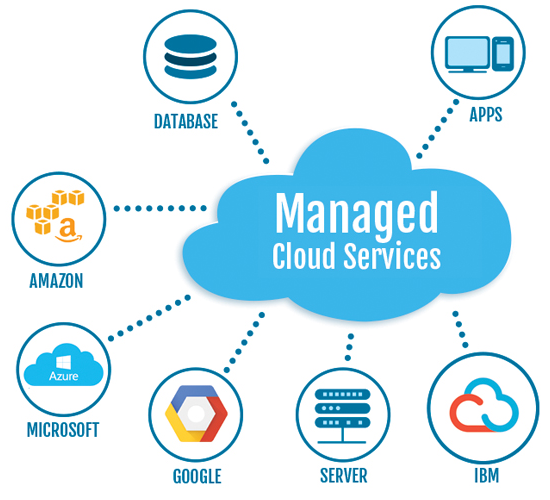
Integrating cloud services into your IT network can be intimidating, especially for those who are unfamiliar with the technology. Luckily there are plenty of experienced IT professionals and companies out there that can assist you in getting your data and applications moved onto the cloud as well as making sure everything is running smoothly and securely on your organisation’s system.
When it comes down to transferring all or a part of what makes up your business over to a cloud-based platform, it requires several steps. To start you need to figure out which elements within your whole setup would benefit most from this development.
Figuring out whether you’re going to need Infrastructure as a Service (IaaS), Platform as a Service (PaaS) or Software as a Service (SaaS) is essential. When that’s been decided, it’s time to work on the implementation plan which will show exactly how everything needs to move into your cloud setup – so all parts of your business can stay running during the transition and downtime is kept at its lowest possible level.
Integrating cloud computing into your existing IT network is about more than just taking advantage of the benefits; you’ve also got to consider where data should be stored, what security protocols need setting up, and how users will access applications in a whole new environment. You’ll want to make sure everything’s secure so that it can’t fall foul of malicious actors or natural disasters – backing things up regularly means there won’t ever be any problems with lost data. Plus, configuring user permissions correctly means only those who should have access do – no blurring boundaries between public and private information here!
To ensure your brand-new system works together perfectly as part of the larger IT network you’ll naturally want to test it out thoroughly first. Having an experienced partner on hand is invaluable for avoiding potential pitfalls in advance – these expert IT professionals understand that trouble emerges from somewhere unexpected all too often, so they anticipate issues before they become major headaches AND help get every aspect functioning like clockwork once integration has taken place.
Utilizing cloud services really ought to be expected by businesses nowadays – armed with sound planning procedures though this not only leads towards greater efficiency but saves time AND money when compared to attempting stuff without proper preparation beforehand!
Fundamentals of Data Security in IT Networking

When it comes to protecting data from being accessed by unauthorised users, authentication is a must. It involves verifying the identity of each person accessing your system – whether they’re using passwords, biometrics such as fingerprints or facial recognition technology, or even physical keys and cards…you name it! This way you can be sure that only authorised people will have access to sensitive information.
Additionally, this could also help guard against malicious attacks like phishing which aim at obtaining credentials for illicit purposes. Rhetorical Question: But how do we know our security measures aren’t just providing a false sense of protection? Apart from having robust authentication methods in place, it’s essential to develop strong policies around user activity monitoring and logging so any suspicious behaviour can be identified quickly before a breach occurs.
System administrators should keep track of all changes made on devices connected to the network including hardware installations or software updates; these records allow easy reverting if something goes wrong while ensuring full accountability over each incident taking place within an organisation’s IT infrastructure.
It’s critically important to ensure that only those personnel who have been sanctioned can get access to the sensitive information on the network, in addition to blocking out unauthorised users from enrolling. What is more, encryption also has its part of play when it comes to securing data; by scrambling up all info nobody without specific passwords or keys can read it and this makes life tougher for anyone attempting hacking – stop them getting their hands on confidential stuff! It’s worth noting here though that as technology progresses we must be vigilant with our encryptions so they stay effective against new threats and vulnerabilities.
An essential component of IT networking services is access control when it comes to data security. This method empowers system administrators to decide who can gain entry into certain parts of the network and how much authority they possess there. For instance, one user might be allowed full admin control over the entire system whereas another person may just have a license to browse some specific files or documents on the network. Access control will help keep vital information safe from clandestine users at the same time allowing those who are authorised to conduct their jobs efficiently without jeopardising the overall security level of the network.
Businesses must keep track of their networks for any suspicious activity or violations of security protocols. Network monitoring solutions can alert team members when something appears awry which could point towards a probable attack or breach in security policies. Monitoring software also permits admins to recognise trends that might suggest an imminent assault and take preventative measures before any damage is done.
To sum up, preserving your organisation’s essential data requires multiple steps regarding securing your IT network services such as authentication, encryption, access control and implementation of monitoring solutions. If these precautions are implemented correctly then you can guarantee that unauthorised individuals will be unable to gain access to delicate information on the system/networks while authorised staff have secure entrance without infringing set safety regulations by the company policy.
Implementing Data Security Measures for Network Protection
Regarding IT network services, data security is of utmost importance. We’ve needed secure and more effective data systems ever since the start of the 2000s when cybercrime began to be recognised properly. Nowadays in such a technology-dominated world, it’s a must for us to put some protective measures into action to ensure our networks are safeguarded at any time.
As hackers and other untrustworthy sources become increasingly advanced with their intrusions on businesses, organisations have no other choice but to keep up the pace and make sure that their system doesn’t leave anything open for attacks or hijacks.
The main starting point towards enhancing your online security should begin by forming a defence strategy plan.
When it comes to network security, there are a few key steps you can take. Firstly, establishing acceptable use policies is essential for controlling who has access to what information on your system and monitoring user activity will give additional insight as to how the network is being used. Secondly, installing firewalls and other software that provides intrusion detection can help prevent unauthorised individuals from accessing sensitive files or networks which could cause damage if accessed by an outside party. These measures must be in place to keep your data safe from external threats.
It’s super important to encrypt any private data stored on-site or sent over the internet. Encrypting your files means that even if they get intercepted, you can’t read what is inside them without a special decryption key; this makes it much harder for hackers to take confidential info from company machines and servers. Plus, investing in a dependable backup system which stores all of your vital data off-site is also essential so that if there is an emergency such as a natural disaster or massive breach of information – it would still be retrievable.
At last, make sure everyone knows why these safeguards are necessary and how people should feel about having them put into place. Educating users could help guarantee they do something to protect their accounts from malicious third parties plus follow rules when working with sensitive material on business networks/computers etc. With good planning, teaching staff/users properly and putting security measures into action – you’ll have better protection than before!
Case Studies of Successful IT Networking Services
IT networking services are becoming ever more essential for companies to stay competitive. Yet, with all the alternatives available, it can be tricky to figure out which one is suitable for you. As you might already know, selecting an unsuitable service provider can cause some major issues – not only financially but also in terms of general performance. Examining success stories from other IT Networking Services could give insight into what works and what doesn’t. Case studies provide a precious resource when trying to comprehend how a certain IT networking plan was concluded successfully!
It is important to get a grasp of the finer points behind every success story – whether it be design principles, implementation difficulties or results accomplished. It’s also necessary to assess any problems that may have resulted during the process and stayed unresolved. Examining these stories allows businesses to identify which strategies are likely to bear the most fruits when taking up their projects. To find decent case studies one should consult with IT specialists who excel in network solutions.
If you’re looking for a reliable IT networking services provider, then consulting firms can be an excellent source of advice and guidance. They’ll have plenty of experience in this area so they should be able to give you great examples from projects they’ve completed successfully before – not forgetting the case studies that are available on their websites too!
It’s also worth asking your network if anyone has any recommendations or knows about relevant case studies; after all, it could end up saving you both money and time by hearing stories about what worked well (or didn’t!) for someone else who was attempting something similar.
Future Trends in IT Networking and Data Security
As a business proprietor, there’s nothing more critical than protecting your IT network and data. With the continuously progressing nature of tech these days, it can be hard to stay informed on the newest trends in IT networking and info security; however, keeping abreast is indispensable for any prosperous enterprise. Have you taken into account the latest tendencies in IT networking and knowledge protection that companies should acquaint themselves with if they need to protect their important information? It’s essential stuff!
In recent years, cloud computing has become increasingly popular, giving businesses the ability to store their data off-site while keeping it safe from any potential threats. Companies are taking full advantage of virtual private networks (VPNs) too – which enables them to securely access their network infrastructure from anywhere in the world and be connected regardless of location or device used.
To enhance security further, companies have started implementing advanced encryption measures such as hardware encryption codes alongside biometric authentication technology and two-factor authentication processes. A well-thought-out system like this can give confidence that confidential information is kept secure at all times; but how easy is it for a hacker to bypass these sophisticated methods?
These methods offer an extra shield of protection by guaranteeing that only those with authorisation can be given entrance to the company’s network and confidential data. One fashion that’s becoming ever more popular is the use of machine learning algorithms to automate security processes like malware discovery and threat identification.
By employing these algorithms, enterprises can spot dangers quicker and identify potential weak points in their networks before they become major troubles. Automated systems are also being used to mechanically fix software vulnerabilities so businesses don’t have to monitor them frequently manually.
All things considered, understanding the newest trends in IT networking and data safety is fundamental for any organisation wanting to keep ahead of possible cyber-security threats. Utilising current technologies such as cloud computing, VPNs and automated system patches enables firms both protect their valuable information while still allowing customers comfort when required – giving rise to some important questions: Is your business sufficiently prepared? What measures do you need to put into place?
Wrapping Up!
To wrap up, IT networking services offer network solutions to keep businesses on the cutting edge with their demands. They can help set you up with a reliable system of maintenance and infrastructure that’ll guarantee your data is secure. Cloud services are also available, so you don’t miss out on having access to the latest tech developments either! An all-round approach from IT networking offers dependability for better performance – what more could you ask?
Are you pondering a career in network engineering? Considering taking the plunge and signing up for a master’s program in this field? Then why not enrol on our Network Engineer Master Program right now? We provide an extensive course that covers all aspects of network engineering, from design and installation to configuration and maintenance. Our experienced tutors will be with you every step of the way, furnishing up-to-date information about the most modern industry advancements. You’ll acquire an intense comprehension of the principles, technologies and trends which are moulding the networking industry.
Acquire real-world experience through practical activities and projects that shall prepare you for internships or job chances within this sector – so don’t dawdle – take control over your perspective by enrolling on our Network Engineer Master Programme today! With such guidance along each stage can only work towards success; seize this opportunity before it slips past forever!
Happy Learning!

